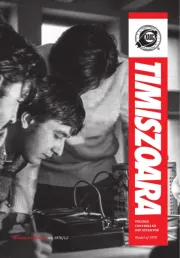Xaoc Tirana Handleiding
Xaoc
Niet gecategoriseerd
Tirana
Bekijk gratis de handleiding van Xaoc Tirana (4 pagina’s), behorend tot de categorie Niet gecategoriseerd. Deze gids werd als nuttig beoordeeld door 73 mensen en kreeg gemiddeld 4.9 sterren uit 37 reviews. Heb je een vraag over Xaoc Tirana of wil je andere gebruikers van dit product iets vragen? Stel een vraag
Pagina 1/4

Thank you for purchasing the
Xaoc Devices product. The
Tirana module comes in handy
as a classic step sequencer,
modulation source, voltage
bank, arpeggiator etc., serv-
ing as the utility module for
supporting other sequencers,
but it also shines on its own
terms. Due to smart features
to be described in this manual,
Tirana provides a number of
very interesting possibilities,
and turns out to be surpris-
ingly powerful module, while
preserving the ease of use
and minimal real estate in
the system. It is only 6hp, and
therefore a perfect solution for
compact and portable modular
setups, but can empower just
any system to a great extent.

Clear 6hp space in your
eurorack cabinet and turn
the power off. Ensure that the
jumper on the in header re-
mains in place (for single unit
operation; for multiplied setups
read the instructions further
down in the manual). Now plug
in the ribbon cable to the bus
board, observing the red stripe
orientation. Tirana has been
secured against reversed power
connection but it is always a
good habit to pay attention to
this. Mount the screws and turn
your system back on.
In order to operate, an external
clock needs to be fed to the
clock input 3 – usually the
pulse from a LFO or any clock
generator of choice. Steps will
now be played subsequently in
a loop. Adjust the desired pitch
by turning knobs 1. Generated
pitch and trigger voltages are
available at cv out 8 and trig-
ger 7 sockets.
Each step may now be removed
from the sequence (muted) by
pressing the corresponding
button 2 . Please note that
only the trigger output is being
muted; the pitch voltage is
available as usual.
The sequence direction can be
changed by feeding a trigger
impulse into the direct. input
4. To reset the sequence, a
trigger needs to be fed into the
reset input 6.
The sequence can be also
transposed (offset) by provid-
ing control voltage into the
transp. input jack 5.
2
1
3
54
6
87

Each step can be repeated
up to 4 times (resulting in up
to 16 steps in the sequence).
To set a desired number of
repeats for a given step, hold its
mute button down for approx.
2 seconds until the menu mode
is conrmed by all buttons
dimmed for a moment. Then,
push the button no. 2 for one
repetition (2 note events),
but-
ton no. 3 for double repetition
(3 events) or button no. 4 for
triple repetition of the given step
(4 events). To reset the desired
step to generate just one note,
push button no. 1.
Tirana ships set to unipolar
0 to 10 V mode (as most users
will probably want to use it as
a melody generator). Still, the
module makes a great modula-
tion source when set to bipolar
-5 to +5V operation. To adjust
the desired mode, simply set
the jumper on the back of the
module.
You can easily chain up a
number of Tirana units together
to open up a lot of interesting
possibilities.
Every Tirana ships with one
10-pin ribbon cable and a loop
wire. Attach them exactly as
shown on the picture! First,
every slave unit requires jump-
ers to be removed (these are
required for single-unit opera-
tion). Then, every ribbon should
connect the out header of the
master unit with the in header
of slave unit. The rst unit in a
chain should only have the out
header occupied.
The single wire cable needs to
connect the lowest left pin of the
in header on the master unit,
and the same lowest left pin of
the out header on the last slave
unit in a chain.
Please double check that if it is
mounted correctly and put the
whole set in your cabinet. Don’t
forget about powering every
single Tirana unit.
• Build a 8, 12, 16, 32 (and lon-
ger) – step sequencer subsystem
using multiple Tiranas. The rst
unit in a linked chain acts as the
master, and this is where all the
patch cables should be fed. The
mutes and repetitions work for
each slave unit independently.
• Use one Tirana to transpose
the other one (unlinked) for
a pseudo arpeggio effect. Use
different divisions of the same
clock and step repeat function.
• Let one Tirana trigger the re-
set or direction change function
of another unit (unlinked).
• Use a couple of unlinked Ti-
ranas for complex sequencing:
feed them different clocks, com-
bine their trigger outputs with
Xaoc Bytom and CV outputs
with Xaoc Warna mixer.
• Make the trigger output a
source of complex clock for
another Tirana.
• Tirana comes in handy as an
utility clock divider. Feed a clock
and adjust the same repeat
setting on every step. Division is
available at the trigger output.
master
slave
slave
slave
Remove the jumper from
every module but master!
Then, attach supplied cables
exactly as shown on the
picture.
Product specificaties
| Merk: | Xaoc |
| Categorie: | Niet gecategoriseerd |
| Model: | Tirana |
Heb je hulp nodig?
Als je hulp nodig hebt met Xaoc Tirana stel dan hieronder een vraag en andere gebruikers zullen je antwoorden
Handleiding Niet gecategoriseerd Xaoc

5 Augustus 2025

5 Augustus 2025

5 Augustus 2025

5 Augustus 2025

5 Augustus 2025

5 Augustus 2025

5 Augustus 2025

5 Augustus 2025

5 Augustus 2025

4 Augustus 2025
Handleiding Niet gecategoriseerd
- Honey-Can-Do
- Tesla
- Shuttle
- QuickMill
- Leap Frog
- DiGiGrid
- OM SYSTEM
- Ugreen
- Globo
- K&M
- Kaiser Fototechnik
- Peg Perego
- MOON
- FANAUE
- AVer
Nieuwste handleidingen voor Niet gecategoriseerd

14 September 2025

13 September 2025

13 September 2025

13 September 2025

13 September 2025

13 September 2025

13 September 2025

13 September 2025

13 September 2025

13 September 2025